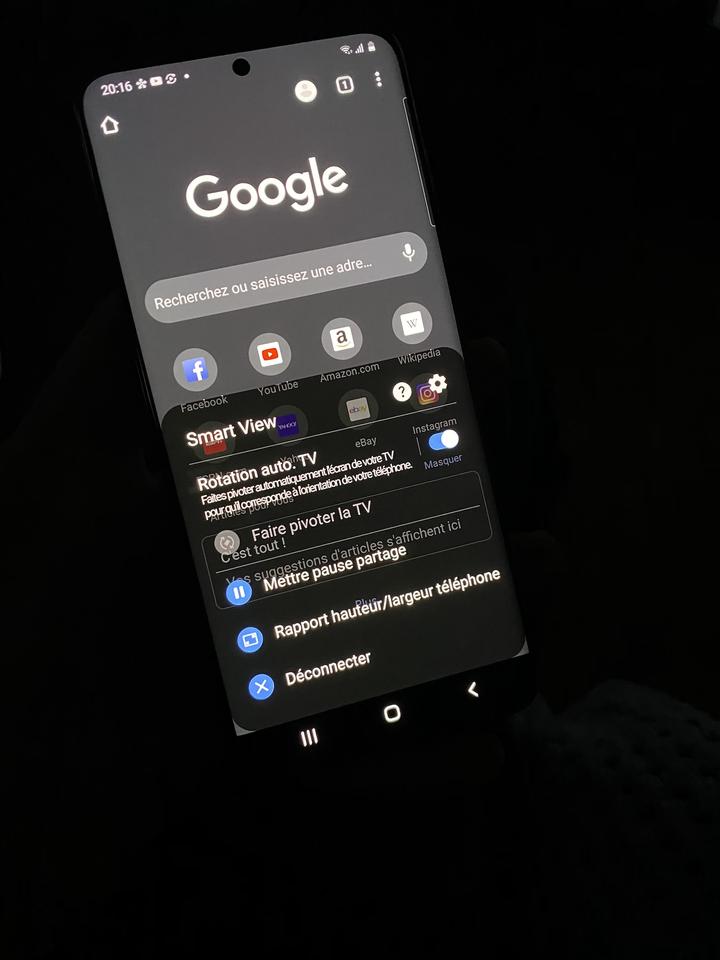With The Sero, Samsung invents the television that can be used in both portrait and landscape mode. It's stunning, but the interest remains unclear.
We cannot accuse Samsung of not innovating in the television segment. With its Lifestyle range, the manufacturer often gives free rein to its imagination. After the television-picture allowing the object to be concealed as well as possible in a well-decorated interior (The Frame), it is now possible to acquire a screen capable of rotating 90 degrees.
The goal ? Be able to work in portrait mode as well as in landscape mode. The real goal? Match the orientation of your TV with that of a smartphone. Called The Sero, the product is theoretically designed for millennials unable to pick up their phone... But in fact, it's hard to even imagine them using such a device.
When we received The Sero, what was our surprise to discover a box higher than wide (it's the opposite, for a normal television). Upon unpacking, The Sero shakes up habits: usually, we are tempted to voluntarily abandon the instructions for use of the device. This time, no risk taking: to install the product correctly, we preferred to delve into the document.
To go furtherQLED 4K and 8K televisions: understand everything about the Samsung range in 2020Find Samsung The Sero for less than 1,300 eurosSamsung The Sero Television
Source: Maxime Claudel for Numerama
The Sero is stunning…
In terms of design, The Sero is unlike any other TV. When turned off, the TV is in portrait mode — like a large mirror with a diagonal of 43 inches (110 centimeters) and a frame reminiscent of a painting. Its unique design prevents it from being hung on the wall or taking place on a piece of furniture. It is placed directly on the ground and it holds thanks to a weighted foot to be fixed at the back, easel style.

Samsung's atypical product is slightly tilted – like Sony's first OLED TVs. For those who would like to install The Sero at home, it will be necessary to provide a dedicated space. It will also be necessary to find places to put the devices to be connected to it, since The Sero is a piece of furniture in its own right (but without any shelves).
Once The Sero is comfortably installed in a living room, you have to go through the essential configuration step. She relies on an application called SmartThings to download to her phone (available on iOS and Android). It allows you to customize The Sero and to drive it more easily. A remote control is still provided for those who prefer more classic ergonomics.
Like any self-respecting connected object, The Sero can be integrated into an ecosystem that can be controlled by voice. That of Samsung is ultra complete, with access to a host of applications and compatibility with other devices.
The Sero can be used like a conventional television. It is possible to switch it manually to landscape mode for normal use – knowing that a few seconds are enough for the screen to rotate in the desired direction. The Sero relies on QLED technology to offer an overall convincing image, certainly far from the best references in the range. We think of the depth of the blacks, which are more grayish than on the Q95T for example, or even of the viewing angles, which are more restricted and which fade the colors. We can nevertheless appreciate its very dynamic rendering, with comfortable brightness and generous sharpness. As always with Samsung, image-enhancing treatments tend to be overzealous. Do not hesitate to temper them according to your preferences.
But what's the point?
Smart View functionality with The Sero TV
Source: Maxime Claudel for Numerama
The Sero makes perfect sense with a Samsung smartphone in your hands. Thanks to the SmartThings application and the Smart View feature, you can mirror your mobile screen in seconds. Nothing new in itself, except that The Sero adds orientation to use. On YouTube, the illusion is perfect: you launch the application on your phone in portrait format to read the comments and then you rotate to enjoy the full screen in landscape mode – and vice versa.
The TV automatically adapts to the orientation of the smartphone it's linked to — with very little latency. The link works very well, the technology too. It now remains to find him… a real interest.
During our test, we put our finger on certain limits: why does the television not automatically switch to landscape mode when it detects a console on or a TV box? Why doesn't the Smart View work with an iPhone (we have to wait for an update…)? The Sero certainly produces its effect, but struggles to convert its charm asset into an indispensable argument. It is intended for a niche of large consumers of vertical content who would like to take advantage of a larger display (for adapted video games, for example) – and who have the means!
In any case, The Sero is a lifestyle product down to its packaging, which can be recycled into useful objects. For this, the cardboard is dressed with several points to cut pieces to assemble by following the instructions provided by Samsung. You can make a cat tunnel, a book shelf or a magazine storage... If the idea seems relevant from an ecological point of view, we are not sure that the owners want to spoil their interior decoration with cardboard buildings. Not to mention the fact that the advantage seems relatively ridiculous, when you spend 1,300 euros for a television…
